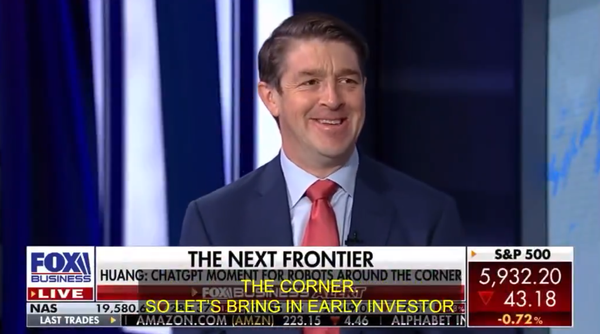Trade Alert: Cycles, the Fed and why I’m selling this chip stock

Let’s touch on several important Revolution Investing topics that are more related than you realize.
Will the Fed do another round of Quantitative Easing, which is a direct form of welfare for the giant banks who package and peddle securities and the corporations who borrow money and an indirect form of welfare for homeowners and bond and stock market investors. Remember, of course that these 0% and QE policies aren’t “free” and they are being paid for by the poor, the renters, middle class, and rural America.
Or, is the Fed going to raise rates finally because corporate and banking profits, buybacks, mergers, margins are at all-time highs and a higher percentage of GDP than ever before in our nation’s history?
Or will they just leave rates near 0% for another year or two?
Does it matter? I have explained before that the last quarter century of history, and my entire time on Wall Street, show that a Fed hike phase is probably BULLISH for stocks.
As I wrote in an article back in 2010 called “Why you must fight the Fed and get ready for another stock market bubble:”
‘There’s an old saying on Wall Street that you “can’t fight the Fed,” but it’s dead wrong. For the last 15 years [now 20 years plus and counting), you always want to buy when the Fed is getting done lowering rates and stick around til the Fed starts to lower rates.’
In about 1994, the Fed stopped lowering rates and never went that low again for many years, as the overall trend in rates was higher. Meanwhile, the stock market went into a huge bubble by the year 2000. By 2001, the Fed started dropping rates and the markets literally crashed over the next couple years. By 2003, the Fed was done lowering rates and we once again went into an environment of rising interest rates — and the stock market doubled over the next three years.
Will there be a time to get bearish and get much more defensive in our portfolios? Of course. But it won’t be easy.
How many analysts and investors do you know launched a tech hedge fund in October 2002 as the Nasdaq bottomed after a 75% crash? And how many analysts do you actually know who turned from bull to bear and closed their hedge fund in October 2007 to take a TV job? How many analysts and investors do you know who called for the stock market to go into a huge “Bubble blowing bull market” back in 2009 and 2010 as the markets were bottoming from yet another crash?
I don’t think there are many. And look, I’m not trying to be braggadocios, but it’s important to realize just how few analysts and investors are even able to change from bull to bear and manage their risk accordingly over the cycles. Will I nail the next top? I’m not sure we have to, but I will certainly be doing my best to nail it again.
In the meantime, there’s more risk in owning stocks with the markets at all-time highs than there was in buying when the markets are crashed.
Meanwhile, as the markets bubble and crash and bubble again over the last few decades, do you realize that it’s only been 40 years that has seen the PC evolved from this Apple 1 prototype to the smartphone, tablet, laptop, smartwatch, etc. Just try to imagine another forty years of improvements to the processor, software, form factor and so on.

PCs themselves continue to fade in importance and are no longer even matching the broader economy’s growth as PC sales will be down again this year as they were last year. Which leads me to Intel.
Intel’s buying Altera, a chip company that sells their chips into routers, network switches, car parts, refrigerators and other industrial uses. Intel could have bought a wireless chip company to get a foothold into handsets/tablets. I do like that $INTC is getting diversifying away from CPUs and moving into FPGAs (essentially CPUs with less processing power overall but much more specialized and efficient chips than the broader-application, faster CPUs that Intel specializes in).
But I’m not impressed with their timing and how much they’re paying for Altera’s 5% annual topline growth. Intel thinks they can get the Altera business up to 7% compounded annual growth for the next few years, but I don’t think that’s very impressive versus the nearly 10x topline sales that Intel’s paying here. To put those numbers in perspective, realize that with AMBA at $90 per share, you’re paying 10x topline sales for a company that’s growing 25-30% per year vs Altera’s 5-7%.
One of our main reasons for owning Intel was because I expected the company’s mobile chip business to finally take off. Internet of Things is going to be huge, and Altera will bring Intel into that business, but I’m not sure it’s going to be enough to move the needle as Intel’s PC business and mobile business continue to struggle.
Indeed, I am disappointed enough in Intel spending $17 billion or so, which is equivalent to 10% of Intel’s entire valuation, that I think it’s time to take our profits on Intel and move on for now. We’ve got a 40% gain on our Intel since we added to it and we also have been paid a 2% annualized dividend for the last couple years while we’ve owned it. I’ll keep Intel on my radar obviously, but I’m stepping away and removing Intel from the portfolio today.
I’ve got several stocks I’m looking at adding to the portfolio that I think offer a better risk/reward than Intel with this high-priced acquisition, so stay tuned.
Speaking of Ambarella, I’d consider trimming some $AMBA if you haven’t yet. That said, though it’s not my largest position, it’s a Top 3 or Top 4 Largest position and getting larger as the stock price climbs. Obviously, there could easily be $10 downside if the earnings report on June 2 is anything but stellar, and the stock would simply be back to where it was this time last week and would still be up 3x where I bought it. $AMBA ‘s earnings should be very strong, showing lots of growth and margin expansion. Good enough to keep the stock from dropping a little bit after a 300% move straight up? Not so sure.
Finally, here’s a must-watch video: “My goal is to give you a sense of the pace of change. We haven’t seen one percent of the rate of change that we going to see within the next ten years. It used to be that a thousand years ago, the only people who could change a nation or a region of the world were the Kings and Queens. One hundred years ago it was the industrialists, the robber barons, that could make the change.Today it’s anyone…”




